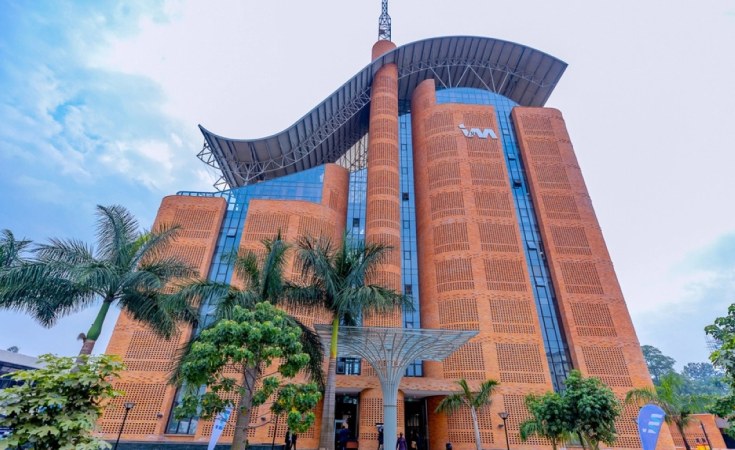There are quite many reasons as to why Rwanda chose to go green and they include the need to save the planet, and decrease building operation costs (energy and water), according to experts.
Green building, a resource-efficient method of construction that produces healthier buildings which have less impact on the environment and cost less to maintain, involves the application of processes that are environmentally responsible and resource-efficient throughout a building's life-cycle. By and large, green buildings are considered to be environmentally sustainable and economically profitable.
ALSO READ: Govt considers rewarding green buildings
Sylvie Mubagekazi, the Chief Executive of the Clean Production and Climate Innovation Center (CPCIC), explained that in the global supply chain, the costs of solar and wind power, in particular, have been declining steadily over the years, making these sources more competitive as compared to traditional fossil fuels.
Established under the Nation Industrial Research and Development Agency (NIRDA), the CPCIC works to ensure that all technology, processes, and services by the private and the public sector embrace the best practices in terms of climate change resilience and cleaner or efficient production.
ALSO READ: A peek at Kigali's green buildings
Mubagekazi noted that the initial investment cost for incorporating cleaner production technologies in green buildings can be relatively high. However, it's important to view these investments as long-term strategies that offer various benefits overtime. While the initial costs may be higher, many cleaner production technologies offer long-term savings through reduced energy consumption, lower operational costs, and potentially increased property value, she explained.
ALSO READ: 'Blended finance' could boost green investments in Rwanda
She said: "Beyond financial considerations, investing in cleaner production technologies contributes to environmental sustainability. Many organizations and individuals are increasingly prioritisng sustainability, and green buildings aligned with these values."
She explained that as technology advances, the costs of cleaner production technologies tend to decrease. Continuous innovation and improvements in manufacturing processes can result in more affordable options for implementing sustainable solutions.
As noted, savings from implementing cleaner production technologies in buildings vary depending on factors like size of building, adopted technologies, efficiency of the technologies.
For example, an increase in room temperature of 10°C can increase the heating fuel consumption by 6 to 10 per cent.
"Installing automatic lighting controls (timers, daylight or occupancy sensors) saves 10 to 25 per cent of energy. Switching off one tonne window air conditioner for one hour daily during lunch hour avoids consumption of 445 kkilowatt-hours."
According to Yves Sangwa, the Chief Executive of Rwanda Green Building Organization, an NGO that aims to develop the local green building industry, green building costs mostly depend on the type of green building certification the client decides to use.
However, he noted that by experience, a building can achieve certification in the same budget as a non-green building, if the sustainability experts are involved at the early stages of the project. In some cases, incremental cost can be 10 to 12 per cent, which is recovered in a short time due to decreased building operations cost energy and water bills.
Sangwa noted that green construction materials can't all be local because "we can't find finishing materials factories like glass factories, and tires as most clients prefer to purchase them in China, Turkey or Dubai which is relatively cheaper compared to the locally manufactured tires, water fittings and electrical [equipment], among others."
He noted that bricks, cement, paints, and roofing are readily available, locally.
Mubagekazi explained that the durability of cleaner production technologies and construction materials can vary based on factors such as the specific technology or material, its quality, maintenance practices, and the conditions in which it is used.
However, a green building can last even more than 20 years depending on the maintenance and use of building.
By and large, it is noted that by reducing energy and water consumption, green buildings save money on utility bills, and also require less maintenance which reduces operational costs.
Incentives
She noted that there is awareness and technical training services as CPCIC offers in-house assessment, audit and trainings on resource efficiency, cleaner production and climate technologies to improve industrial production processes and promote climate-friendly technologies to private operators in industrial building.
The service will be extended to materials used in construction to boost the supply of sustainable materials on the market - specifically in local value chains like stone, clays, sand, and natural soil material.
"We enable access to finance for climate technology developers, businesses and industries. This is done through expert advice, proof of concept grants or loans, prototype demonstration funding, connections to potential investors, and financial institutions providing green finance," she added.
In November 2023, Ireme Invest, a Rwandan private sector green financing facility, secured €20 million (about Rwf 26.3 billion), accompanied by a one-million-Euro grant in technical assistance from the Agence Française de Développement (AFD) to support projects aimed at sustainable development and climate resilience.


